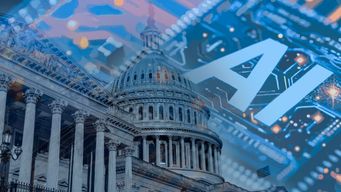A recent jury verdict in a closely watched case filed by French luxury fashion brand Hermès clarified how traditional trademark law can apply to NFTs. In Hermès Int’l v. Rothschild, the jury found that the unauthorized depiction of the brand’s famous Birkin handbags as a series of NFTs constituted trademark infringement, trademark dilution and cybersquatting. Hermès was awarded $133,000 in damages.
The verdict, handed down on February 8, 2023, in the U.S. District Court for the Southern District of New York, arose from one of the first NFT trademark litigations to be heard and go to trial. The verdict sends a big signal to established brands and creators alike that trademarks are still protectable in the new digital economy, as judges — and juries — apply decades’ old precedent to cutting-edge technology.
NFTs and Artistic Commentary
The defendant, professionally known as “Mason Rothschild,” created and sold unauthorized non-fungible tokens (NFTs) depicting colorful fur-covered versions of Hermès’ iconic Birkin handbags. NFTs are digital images stored on the blockchain that can be purchased and sold as investments. Rothschild earned more than $1 million in profits from the sale of the NFTs. Rothschild argued that the NFTs, which he marketed as “MetaBirkins,” were artistic commentary on luxury goods and protected by the First Amendment. This contrasted with evidence presented to the jury suggesting that Rothschild was at least as interested in commercial gain as artistic expression, telling a backer that “he doesn’t think people realize how much you can get away with in art by saying ‘in the style of,’” according to court records.
Just days before the jury handed down its verdict, Judge Jed Rakoff denied the parties’ cross-motions for summary judgment. He ruled that the so-called Rogers legal test applied to determine whether Rothschild’s allegedly expressive work crossed the line into trademark infringement. Under the Rogers test, the First Amendment right to free expression does not bar liability for trademark infringement “if the plaintiff can show that either (1) the use of its trademark in an expressive work was not ‘artistically relevant’ to the underlying work or (2) the trademark is used to ‘explicitly mislead’ the public as to the source or content of the underlying work.” Given the material questions of fact that remained, the court could not decide the central question of “whether the trademark was used to mislead the public about the origin of the product or the parties that endorse or are affiliated with it” as a matter of law.
The Verdict
After a weeklong trial and three days of deliberation, the jury found that Rothschild infringed Hermès’ Birkin trademark, and that such infringement was not entitled to First Amendment protection. Notably, Rothschild’s defense was undercut by several challenging facts including, for example, a penchant for poking luxury brands, earning profits exceeding $1.1 million from the sale of the NFTs, the use of the entire Birkin trademark in the NFTs’ name and website domain and evidence of actual consumer confusion.
On Hermès’ cybersquatting claim, the jury found that the Birkin trademark was distinctive at the time the domain name “metabirkins.com” was registered; that the “metabirkins.com” domain name is identical to or confusingly similar to the Hermès Birkin trademark; and that Rothschild had a bad faith intent to profit from the Birkin trademark. Hermès argued throughout the case that Rothschild’s MetaBirkins disrupted and delayed its own efforts to enter the NFT market, limiting its ability to capitalize in the NFT space from the goodwill associated with the Birkin trademark and undermining its ability to compete with other luxury fashion brands already entering the metaverse and NFT space.
While this case presented some unique facts, such as Rothschild’s own admitted desire to push the limits of affiliation with luxury brands, Hermès’ decisive victory will likely encourage other brands to actively enforce their trademark rights in digital realms. This will also surely serve as a warning to creators to at least be aware that their digital creations may expose them to liability.
The Bottom Line
- Brands should monitor whether and how their trademarks are being used in new technologies and know that such use is still subject to traditional principals of trademark law.
- Creators should be aware of the limits of First Amendment protection, particularly when dealing with well-known trademarks.
- Still, brands and creators should be cautious not to overstate the precedential value of Hermès’ win at trial, given the unique facts of the case.





